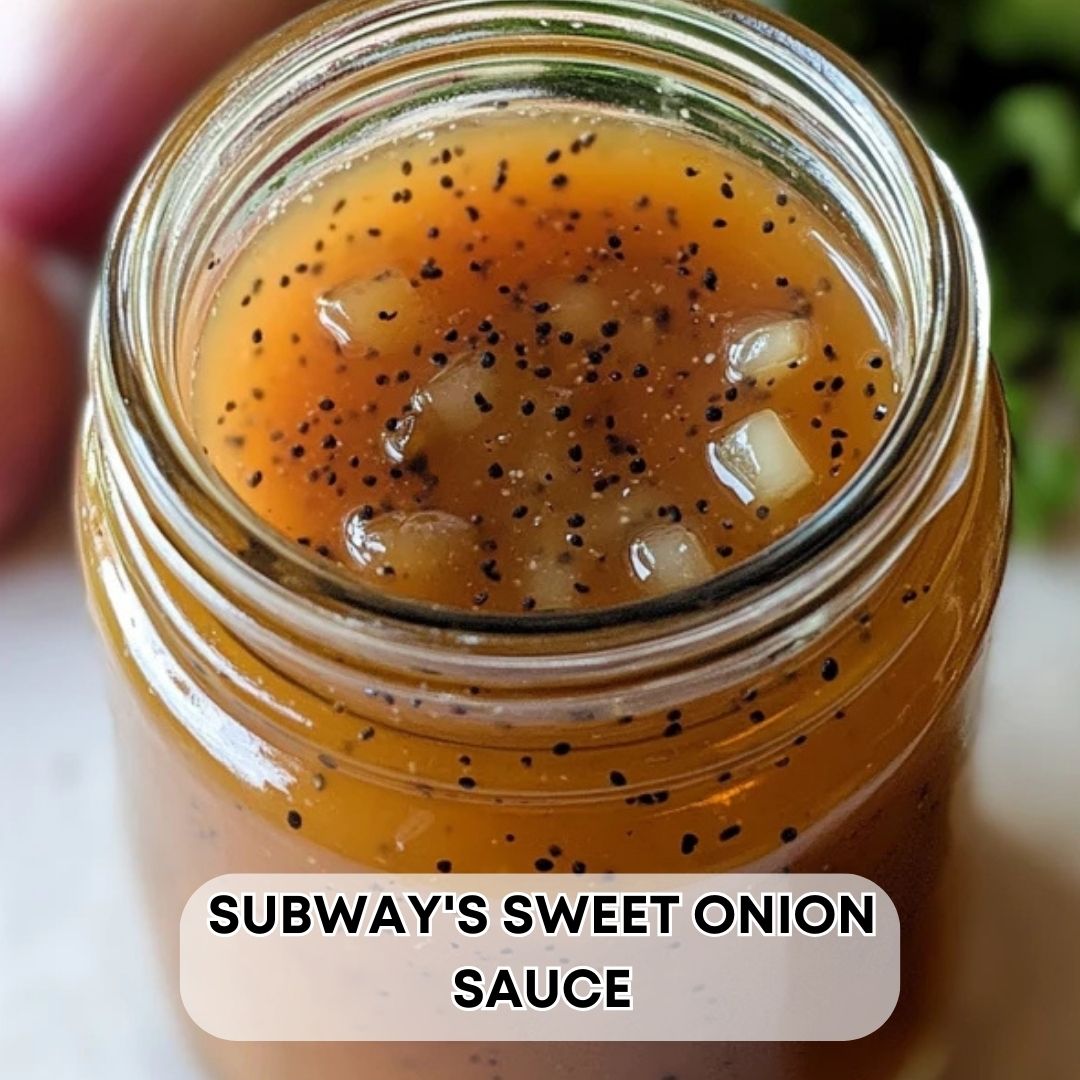The Science Behind the Sauce
Subway’s Sweet Onion Sauce achieves its signature flavor through a carefully calibrated balance of sweet, tangy, and savory elements. The combination of granulated sugar with two types of vinegar creates a sweet-and-sour base, while the trio of onion components (flakes, juice, and powder) builds layered umami depth. Mustard provides emulsification and sharpness, with poppy seeds adding visual texture. The sauce’s characteristic viscosity comes from cornstarch and the natural pectin in mustard.
Professional-Grade Recipe
Ingredients Breakdown
Sweet Foundation:
- ⅔ cup granulated sugar (creates viscosity and sweetness)
- ½ cup cold water (hydration base)
Acidic Components:
- 6 tbsp white vinegar (clean sharpness)
- 1½ tbsp red wine vinegar (fruity complexity)
Texture Agents:
- 1 tbsp cornstarch (thickening power)
- 2½ tsp Dijon mustard (emulsifier with tang)
- 2½ tsp mustard powder (concentrated flavor)
Onion Trinity:
- 1 tbsp minced onion flakes (textural element)
- ¾ tsp fresh onion juice (bright, pungent notes)
- ½ tsp onion powder (consistent background flavor)
Flavor Enhancers:
- ¾ tsp celery salt (umami depth)
- ¼ tsp garlic powder (savory balance)
- ½ tsp salt (flavor potentiator)
- ⅓ tsp paprika (color and earthiness)
- ¼ tsp black pepper (mild heat)
- 1-2 drops sesame oil (toasted aroma)
- 1 tsp poppy seeds (visual signature)
Precision Preparation Method
- Sugar Dissolution:
- Combine sugar, water, and vinegars in heavy-bottomed saucepan
- Heat to 160°F (71°C) while stirring – the ideal temperature for complete sugar dissolution without caramelization
- Slurry Incorporation:
- Whisk cornstarch with 1 tbsp cold water until smooth
- Temper with 2 tbsp hot liquid before adding to main pot
- Bring to 185°F (85°C) for optimal thickening
- Flavor Development:
- Remove from heat before adding delicate ingredients
- Stir in mustard products first to utilize residual heat
- Add onion components in order: juice → powder → flakes
- Incorporate dry spices through a fine mesh sieve
- Finishing Technique:
- Fold in poppy seeds with silicone spatula
- Add sesame oil dropwise using a pipette
- Cool rapidly in ice bath to preserve flavors
Chef’s Notes for Perfection
Consistency Control:
- For sandwich application: 35-45 second viscosity (coats spoon but drips slowly)
- For dipping sauce: Add 1 tsp water if needed
Flavor Balancing:
- If too sweet: Add ¼ tsp citric acid
- If too sharp: Add ½ tsp honey
- For more umami: Add ⅛ tsp MSG
Storage Protocol:
- Shelf life: 28 days refrigerated in sterilized glass
- Freezing not recommended (texture compromise)
Advanced Applications:
- Glaze for grilled chicken (reduce by 25%)
- Base for coleslaw dressing (thin with buttermilk)
- Marinade for pork (add 1 tbsp soy sauce)
Culinary Analysis
This sauce exemplifies professional flavor architecture. The sugar-to-acid ratio (3.5:1) creates the signature sweet-tart profile, while the onion components provide flavor at three different release rates:
- Immediate impact from fresh juice
- Mid-palate from rehydrated flakes
- Finish from powdered form
The mustard serves dual purposes – acting as emulsifier while contributing sulfur compounds that enhance the onion perception. Poppy seeds provide visual contrast and textural interest without affecting flavor.
For food science enthusiasts, the sauce demonstrates Maillard reaction principles through the careful combination of reducing sugars (from corn syrup in the original) with amino acids from onion and mustard. The result is a complex flavor profile that registers differently across the palate.
